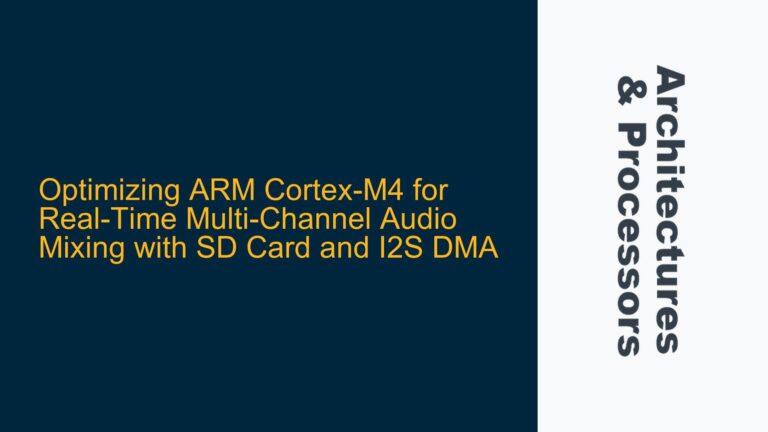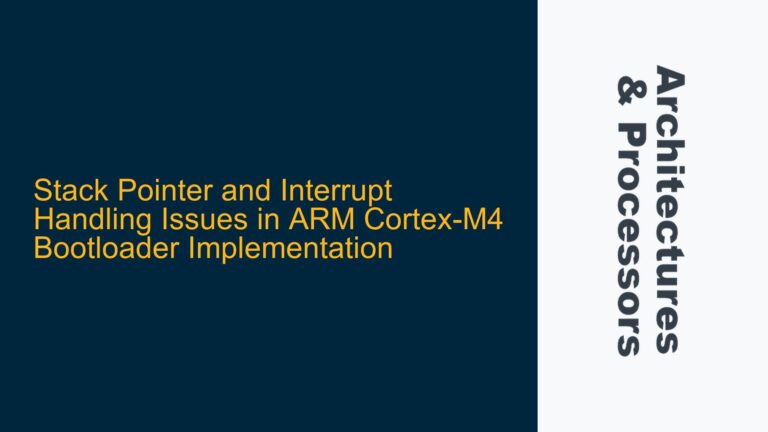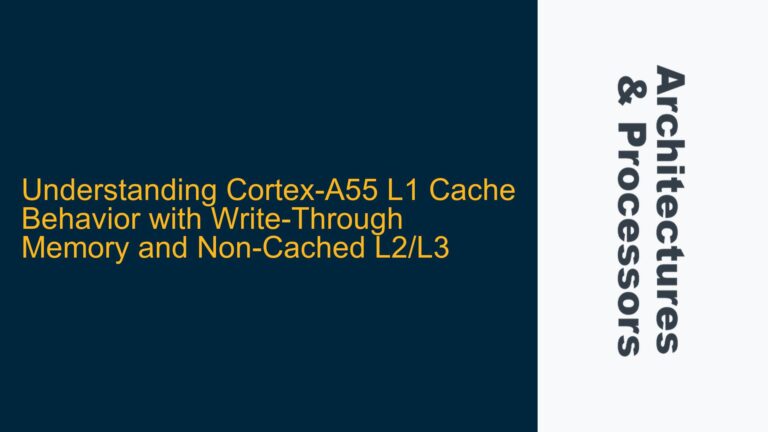ARM Cortex-M Stack Pointer Initialization Mechanism
The ARM Cortex-M architecture employs a unique mechanism for initializing the Stack Pointer (SP) during the reset sequence. Unlike traditional processors where the stack pointer might be set explicitly by the first instruction in the reset handler, the Cortex-M series automatically loads the SP from the first entry of the Vector Table. This design choice is deeply rooted in the architecture’s emphasis on reliability, simplicity, and deterministic behavior.
The Vector Table in Cortex-M processors is a memory region that contains addresses of exception handlers and initial values for critical registers. The first entry in this table is reserved for the initial value of the Main Stack Pointer (MSP). Upon reset, the Cortex-M core fetches this value and loads it into the MSP before any other operation. This ensures that the stack is immediately available for use, even before the first instruction of the reset handler is executed.
This automatic SP initialization mechanism is particularly advantageous in embedded systems where deterministic behavior and fault tolerance are paramount. By ensuring that the stack is set up before any code execution, the Cortex-M architecture mitigates the risk of stack-related issues during the critical early stages of system initialization. This is especially important in safety-critical applications where an uninitialized stack could lead to catastrophic failures.
Implications of Automatic SP Initialization on System Stability and Software Design
The automatic initialization of the Stack Pointer from the Vector Table has significant implications for both system stability and software design. One of the primary benefits is the enhanced robustness against Non-Maskable Interrupts (NMIs) and other exceptions that could occur immediately after reset. In traditional architectures, if an NMI occurs between reset and the explicit setting of the stack pointer, the system could crash due to an invalid stack. The Cortex-M architecture eliminates this risk by ensuring that the stack is valid from the very first cycle after reset.
From a software design perspective, this mechanism simplifies the initialization sequence. Developers do not need to include explicit instructions to set up the stack pointer in their reset handler. This not only reduces the complexity of the startup code but also minimizes the potential for human error. Additionally, it allows for a seamless transition to high-level language routines, such as C-based initialization functions, immediately after reset. This is because the stack, which is essential for function calls and local variable storage, is already initialized.
However, this design choice also imposes certain constraints on the system designer. The Vector Table must be correctly configured with a valid stack pointer value before the processor starts executing code. This requires careful planning of the memory layout and initialization sequence, especially in systems with multiple memory regions or complex boot processes. Failure to provide a valid stack pointer in the Vector Table can lead to undefined behavior and system crashes.
Best Practices for Configuring and Debugging Stack Pointer Initialization
To leverage the benefits of the Cortex-M’s automatic Stack Pointer initialization while avoiding potential pitfalls, developers should adhere to a set of best practices. First and foremost, the Vector Table must be placed in a memory region that is accessible immediately after reset. This typically means placing it in the internal Flash or ROM of the microcontroller. The first entry of the Vector Table should point to a valid memory region reserved for the stack. This region should be large enough to handle the initial stack requirements of the application, including any interrupt service routines that might be invoked early in the initialization sequence.
When debugging issues related to stack pointer initialization, developers should first verify that the Vector Table is correctly located and populated. This can be done by inspecting the memory contents at the Vector Table address using a debugger. The value of the MSP after reset should match the value stored in the first entry of the Vector Table. If there is a mismatch, it could indicate a problem with the memory layout or the initialization sequence.
Another common issue is stack overflow, which can occur if the stack region is too small or if the application uses excessive stack space. To diagnose this, developers can use debugging tools to monitor the stack pointer during execution and ensure that it remains within the allocated stack region. Some Cortex-M processors also include hardware features, such as the Memory Protection Unit (MPU), which can be configured to detect and prevent stack overflows.
In systems with multiple threads or tasks, each task typically has its own stack. In such cases, the initial stack pointer value in the Vector Table is usually the stack for the main thread or the default exception handler. Additional stacks for other tasks must be set up manually during the initialization sequence. Care must be taken to ensure that these stacks are properly aligned and sized to prevent collisions and overflows.
In conclusion, the automatic initialization of the Stack Pointer from the Vector Table is a key feature of the ARM Cortex-M architecture that enhances system stability and simplifies software design. By understanding the underlying mechanisms and adhering to best practices, developers can effectively leverage this feature to build robust and reliable embedded systems. Proper configuration and debugging of the stack pointer initialization process are essential to avoid common pitfalls and ensure smooth system operation.






